Table of Contents
What is IDP.Generic?
IDP.Generic is a term used by AVG or Avast anti-malware utility or web cleaner to clarify the infection of a computer that can be connected to several different malware. However, such a definition can also be falsely positive, especially if AV software or Java installed in your system is old.
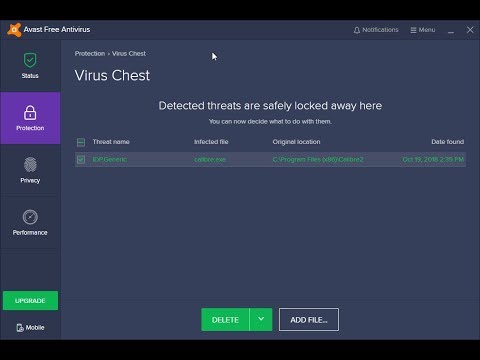
The IDP.Generic detection indicates that the specified anti-malware tools used the identity of the preservation part of the detection to detect an interesting process from an application or directory that was opened in the file explorer. Various tools connect to this problem. Many users experienced this problem following the dialer program, the manufacturer’s diagnostic software, the Steam gaming platform, communication applications, etc and other innocuous utilities.
However, it does not intend that the files found are always false-positive. Since it may actually be a certain type of infection. Therefore, it is very important to ensure that an antimalware is always installed and active on your system. Whether it is false or not, it is necessary to remove IDP.Generic corruption from your system as soon as possible.
What are the reasons behind IDP.Generic found?
It is difficult to discuss the signs of IDP.Generic malware threats, as it can pose all types of malware, including Trojans, cash malware, data hijackers, infections, droppers, worms, rootkits and another type of virus. However, most infections are regularly unnoticeable unless it is extortionists. However, you will experience the following symptoms if it is not a false positive:
- Sluggish running device/Heightened use of resources (CPU, RAM)
- Multiple occurrences of BSOD (Blue screen of death)
- Automatic tab pop-ups leading to suspicious websites in the browser.
- Frequent system crashes
How to identify IDP.Generic Virus?
To find out if IDP.Generic is bogus, make sure you check a few points. Check the catalog in packages with a selection of spyware, or download it with antivirus software altogether. It is often worthwhile to look for the fulfillment of other movements of the previous implementation of IDP.Generic termination.
If you have studied the catalog along with additional utility, security, and general malware and detection, regardless of the minimum, you should update Adobe Flash Player at the start. This extension marked all kinds of security gaps and nowadays, often taken advantage of by intruders. Also, the webpage trick usually uses a flash player forwarded to configure the wrong or even harmful applications. In truth, installing fake updates from suspicious websites can be one of the ways this virus can enter and damage your computer system.
How IDP.Generic Works?
There are hundreds of ways your PC can get damaged by malware. One of such methods for leading the parasite is the source of distribution sends a corrupted document in spam emails. This approach is one of these most successful, although the rate of security may not be as high. Thus, when you receive email from questionable sources, be careful when launching applications or clicking on hyperlinks available within.
Another method of distribution is through unsafe and modded web pages. the culpable can take control of the page, buy ad slots and inject malicious code onto it or simply post malicious files onto third-party (torrent) pages where protection measures are not enough.
Therefore, you need to make sure that your anti-malware is always up to date. Also, make sure that you scan any executable along with the programs as malware amongst such is common. Finally, do not download spaces, keygens, or crack installers, as these type of files usually contain malware in packs, and can be difficult to prevent the malware infection through such sources.
How to Remove IDP.Generic?
Removal of malicious IDP.Generic virus just needs to be done if you have no doubt that the system is actually affected. Just to be clear, We assure you that almost all antivirus companies are bringing up their security tool for the latest variations of IDP.Generic, updating the flash player, or even communicating with AV engines with the interests of the customer. However, it is important to act as IDP.Generic can be truly harmful.
IDP.Generic termination guide is varied depending on which infections you are dealing with. However, researchers traditionally advise you to reboot the system in safe mode in addition to the network and follow the procedure from there, as it is a reliable environment and is safe for troubleshooting. To penetrate this setting, act following the guidelines below.
Before this, in a secure setting, you should conduct a detailed analysis of the system along with help with anti-malware programs, such as a combination cleaner, or any other decent software.
Method 1: Remove Browser Extension
First of all, we recommend that you check your browser extensions and remove everything related to IDP.Generic. Great adware and other unwanted programs use browser extensions to hijack internet applications.
To Remove the IDP.Generic extension from Google Chrome:
- Launch Google Chrome.
- In the address bar, type: “chrome://extensions/” and press Enter.
- Search for IDP.Generic or anything related to it, and once you find it, click delete.
To Remove the IDP.Generic extension from Firefox browser
- Launch Mozilla Firefox.
- In the address bar, type “about: addons” and press Enter.
- In the left menu, select the extension.
- Search for IDP.Generic or anything related to it. Delete if found.
To remove IDP.Generic Add-ons from Internet Explorer
- Launch Internet Explorer.
- From the menu at the top, select the tools, and then click the Manage Add-ons button.
- Search for IDP.Generic or anything related to it, and once you find it, click delete.
- Reopen Internet Explorer. In the unlikely event that IDP.Generic is still in your browser, follow the additional instructions below.
- Press the Windows key+R, enter the command appwiz.CPL and press the enter key
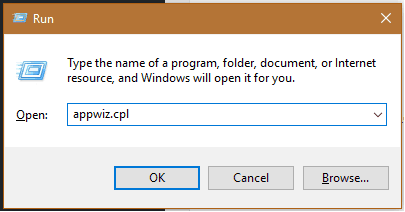
- The program and a window will open where you can find the program IDP.Generic.
- Select IDP.Generic or any other recently installed unnecessary entries and click delete.
An alternative method to clear browser from IDP.Generic
There may be cases where advertisements or puppies cannot be removed by simply removing extensions or codes. In such situations, you need to reset the browser to the default settings. You have noticed that even after getting rid of strange extensions, the infection is still present, follow the instructions below if you are suffering from such a case:
Use the chrome clean tool to remove IDP.Generic
- Launch Google Chrome.
- In the address field, enter: chrome://settings/ and press Enter.
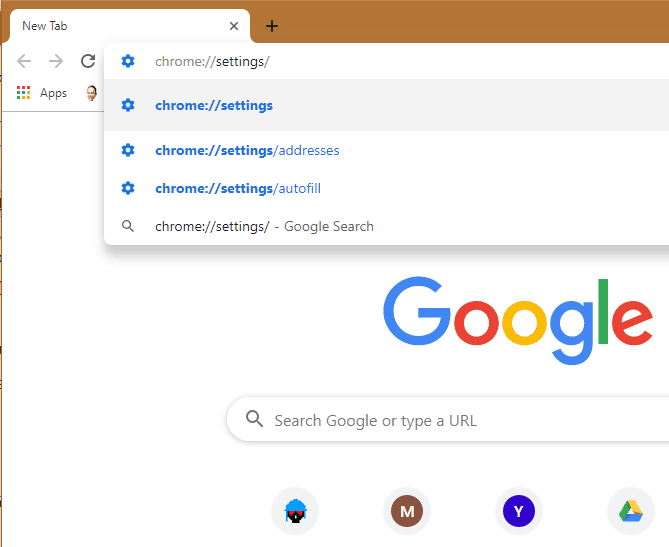
- Expand Advanced options that can be found by scrolling down.

- Scroll down until you see “Reset and clean up”.

- Click on “clean up computer”.
Reset Mozilla Firefox browser to default
If you still find IDP.Generic in your Mozilla Firefox browser, you should be able to get rid of it by restoring the default Firefox settings. During the expansion, plugins will be deleted, it will not affect your browser history, bookmarks or saved cookies on the Internet.
- Launch Mozilla Firefox Browser
- In the address field, type: o: support and press Enter.
- You will be redirected to the troubleshooting information page.
- From the menu on the right, choose to update Firefox.
- Confirm your choice by clicking the update Firefox button in a new window.
- Your browser will automatically close to successfully restore the settings.
- Click Finish.
What to do if IDP.Generic is false positive?
If you are completely sure that IDP.Generic found in your system is a false positive, you can simply add the troubled file in the exclusion section of the antivirus. This will prohibit the antivirus from scanning the file. Thus, you will not receive notification from antivirus again.
How to add file/folder to exclusion in Windows Defender:
The default antivirus in most of the Windows system in the Windows defender. The Windows Defender is quite capable and strong as compared to new-gen antivirus programs.
To add a file/folder to the Windows Defender exclusion list, follow these steps:
- Open windows settings by pressing “Windows key+I”
- Click on “Update & Security” option.
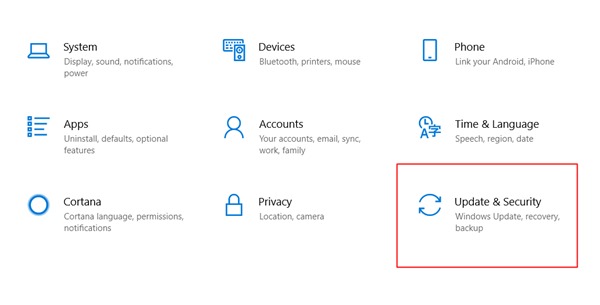
- Then click on the “Windows Security” option on the left side.
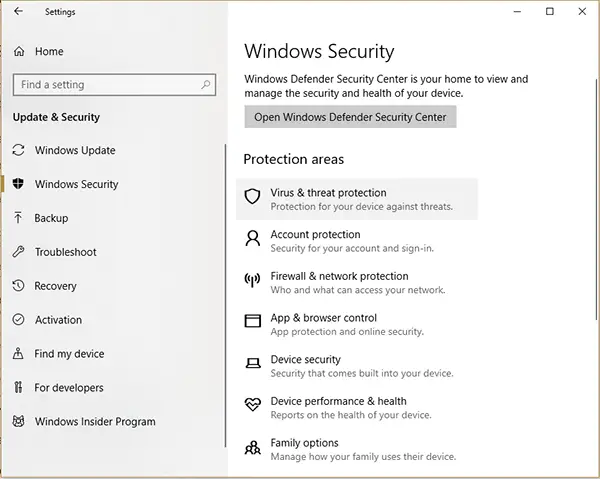
- Now, select “Virus & threat protection”
- Now, the Windows Defender window will open.
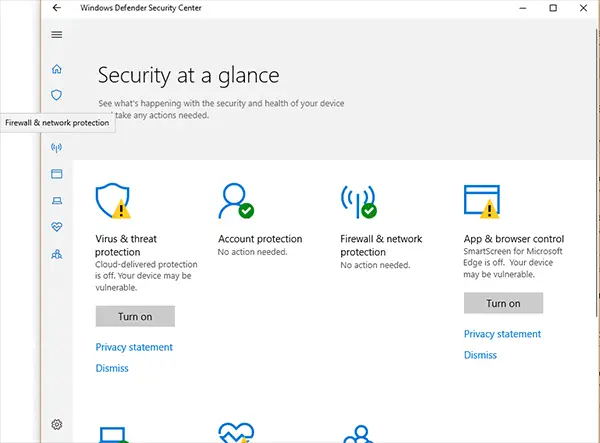
- Select the “Virus & threat protection settings” again.
- After that, scroll down till you find “Exclusions” section.
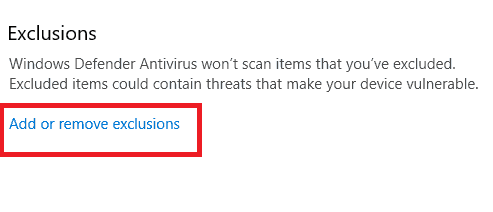
- Click on “Add or remove exclusions”
- After that, simply click on “Add an exclusion” or the “Plus” button.
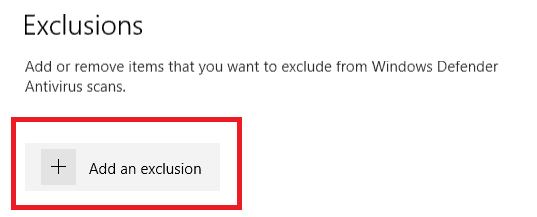
- Then, just put the path of the folder/file to add it in the Windows Defender exclusion list.

